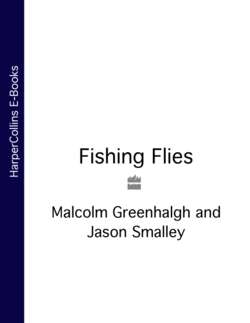Читать книгу Fishing Flies - Smalley - Страница 23
WALTON, BARKER AND COTTON
ОглавлениеIzaak Walton (1593–1683) has been called ‘the Father of Angling’, but as a fly-fisher he is disappointing as his classic The Compleat Angler (1653) added little new to what was already on record with regard to fly-tying and fly-fishing. Two Englishmen who did make a major contribution were Thomas Barker, who published Barker’s Delight or the Art of Angling (1651), and Charles Cotton, whose Instructions How to Angle for a Trout or Grayling in a Clear Stream appeared as a supplement to Walton’s fifth edition of 1676. Cotton knew Walton well enough to have built an elaborate stone fishing ‘temple’ (hardly a hut!), called ‘Piscatoribus Sacrum’, in Walton’s honour by the banks of his River Dove. Barker also knew Walton, so it likely that Cotton and Barker also knew each other and discussed their books during the writing.
Barker pointed out that there were two categories of flies when it came to trout fishing.
The first were what he called ‘palmers’; they had a cock hackle wound or palmered down the hook shank. These have almost disappeared save for a group of flies known as Bumbles. They are still tied and used to catch, mainly grayling, in the rivers of that part of England fished by Cotton (Staffordshire and Derbyshire). Two examples are the GRAYLING STEEL BLUE BUMBLE, see here, and GRAYLING WITCH, see here. They have also survived as trout flies in the loughs of Ireland and lochs of Scotland: examples include the GOLDEN-OLIVE BUMBLE and ZULU, see here & also here.
Charles Cotton, in a portrait from the frontis of The Compleat Angler.
The fishing hut, called Piscatoribus Sacrum, was built by Cotton in 1674 for a visit by Izaak Walton. It is on the bank of the River Dove, in England’s Peak District.
The second class of trout fly were winged flies and are still major trout flies today.
Now let us consult Cotton as to how to tie these flies and for some specific examples. It is important to understand that Cotton, like Walton, wrote in a theatrical, lyrical style. He had two actors, one playing the part of the expert fly-fisher (Piscator), the other the novice who has come for instruction (Viator). First of all, Piscator must show Viator what materials can be used to tie flies, and in those days the fly-fisher took a huge bag of silks, fur and feather, some exotic and expensive, to the waterside so that the real fly being eaten by the trout could be imitated.
PISCATOR. And now let me look out my things to make this fly. Boy! Come, give me my dubbing-bag here presently; and now, Sir, since I find you so honest a man, I will make no scruple to lay open my treasure before you.
VIATOR. Did ever any one see the like! What a heap of trumpery is here! Certainly never an angler in Europe has his shop half so well furnished as you have.
Piscator then gives Viator a verbal slap and points out that every item in his bag is indispensable. What would Viator think about our own twenty-first-century collections of ‘essential’ tying materials.
But then Cotton takes us through the tying of a fly. No vice …
PISCATOR. You see, first, how I hold my hook; and thus I begin. Look you, here are my first two or three whips around the bare hook; thus I join hook and line; thus I put on my wings; thus I twirl and lap on my dubbing; thus I work it up towards the head; thus I part my wings; thus I nip my superfluous dubbing from my silk; thus fasten; thus trim and adjust my fly. And there’s a fly made; and now how do you like it?
VIATOR. In earnest, admirably well; and it perfectly resembles a fly.
And what modern category of fly has a body, upright wings and no hackle? Why, the most effective category of dry fly, the hackleless dry fly (see here, and here)!
Four of Cotton’s flies have been selected to show the two styles, palmers and winged flies.
GREAT-HACKLE [a palmer], the body black, and wrapped with a red feather of a capon untrimmed; that is, the whole length of the hackle staring out …
WHITE HACKLE, the body of white mohair, and warped about with a white hackle-feather …
The artificial GREEN-DRAKE then is made upon a large hook, the dubbing of camel’s hair, bright bear’s hair, the soft down that is combed from a hog’s bristles, and yellow camlet, well mixt together; the body long, and ribbed about with green silk, or rather yellow, waxed with green wax, the whisks of the tail of the long hairs of sable, or fitchet [polecat], and the wings of the white-grey feather of a mallard, dyed yellow …
Cotton then tells how to dye the mallard feather yellow. That fly would catch any trout eating large duns anywhere today.
WHIRLING-DUN … is commonly made of the down of a fox-cub, which is of ash colour at the roots next to the skin, and ribbed about with yellow silk; the wings of the pale grey feather of a mallard.
